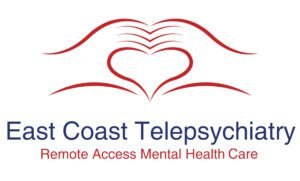Seasonal affective disorder (SAD) is a type of depression that occurs at a specific time of year, usually during the fall and winter months. The prevalence of SAD is highest in countries located at higher latitudes, where there is less sunlight during the winter months. In the United States, for example, the prevalence of SAD is highest in the northern states, where the days are shorter, and there is less sunlight during the winter. Keep reading to learn the signs and how to treat SAD.
Who is at an Increased Risk of Developing Seasonal Affective Disorder (SAD)?
Several factors may increase the risk of developing SAD, including:
- Age: SAD is more common in people over 20, and the risk of developing SAD increases with age.
- Gender: Women are more likely to experience SAD than men.
- Family history: If you have a family history of SAD or other mood disorders, you may be more likely to develop SAD.
- Personal history of depression: If you have a history of depression, you may be more at risk of developing SAD.
- Geography: As mentioned, SAD is more common in regions with shorter, darker winters.
It is important to note that anyone can experience SAD, and it is not limited to any particular age, gender, or geographic location. If you are experiencing symptoms of SAD, it is crucial to seek help from a mental health professional.

ECT – Seasonal Affective Disorder (SAD): Learn the Signs and How to Treat It. Depressed, desperate young man sitting on the building rooftop terrace, wearing hoodie, holding head in hands. East Coast Telepsychiatry can help you get through this.
What are the Signs of SAD?
SAD is often more severe in people with a history of depression or other mood disorders. According to the American Academy of Family Physicians (AAFP), the prevalence of SAD is around 4 to 6% of the general population with 10-20 experiencing mild symptoms of SAD.
Signs of SAD may include:
- Low energy and fatigue
- Difficulty concentrating
- Changes in appetite, particularly a craving for high-carbohydrate foods
- Weight gain
- Social withdrawal
- Depression or feelings of hopelessness
- Difficulty sleeping
Treatment Options for SAD
There are several treatment options for SAD, including:
- Light therapy: Exposing yourself to bright light during the day can help to improve mood and energy levels.
- Vitamin D: Nutritional supplements can help with the systems. Some studies show it is as effective as light therapy.
- Antidepressant medication: Some people with SAD may benefit from taking antidepressant medication, which can help to regulate mood and improve symptoms.
- Psychotherapy: Talking to a mental health professional about your feelings and experiences can help you better understand and manage your symptoms.
- Lifestyle changes: Changing your daily routine, such as getting regular exercise and eating a healthy diet, can help improve your mood and overall well-being.
It is important to remember that SAD is a treatable condition, and many resources are available to help you manage your symptoms and improve your quality of life.
Benefits of Using Telepsychiatry for SAD
Seeing a medical provider for a seasonal affective disorder (SAD) diagnosis through telepsychiatry has many benefits. Telepsychiatry provides care via videoconferencing or remote communication technologies. Some of the benefits of telepsychiatry for SAD diagnosis include the following:
- Convenience: Telepsychiatry allows you to see a doctor from the comfort of your home or other location, which can be especially useful if you live in a remote area or have difficulty traveling.
- Increased access: Telepsychiatry can help increase access to mental health care, particularly in areas with shortages of mental health professionals.
- Increased privacy: Telepsychiatry can offer greater privacy than in-person visits, as you can see the doctor from a private location rather than in a waiting room or exam room.
- Reduced stigma: Some people may feel more comfortable discussing their mental health concerns with a doctor through telepsychiatry, as it may be less stigmatizing than seeking in-person care.
It is important to note that telepsychiatry should be in conjunction with other treatments, such as medication and psychotherapy, as appropriate. If you are experiencing symptoms of SAD, seek help from a mental health professional through telepsychiatry or in-person care immediately.

East Coast Telepsychiatry is Here to Improve Your Mental Health
Seasonal affective disorder (SAD) is a type of depression that occurs at a specific time of year, usually during the fall and winter months. The prevalence of SAD varies depending on several factors, including age, gender, geography, and family history. Take care of your body and mind by eating healthy, getting enough sleep and exercise, managing stressors in your life, and taking time out for fun things. These small steps can make a big difference! If it’s not working, don’t be afraid to get help.
At East Coast Telepsychiatry, we understand how challenging mental health struggles can be. Our mission is to provide quality mental healthcare to individuals who need it in a manner that enables them to maintain an active lifestyle. We are here to give patients compassionate and convenient mental health care by utilizing advanced technology for video conferencing. Schedule an appointment or call us at (843) 299-2033 today.

